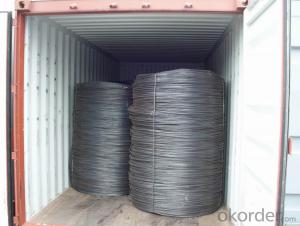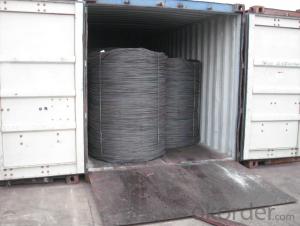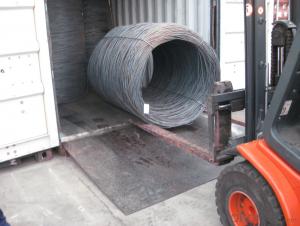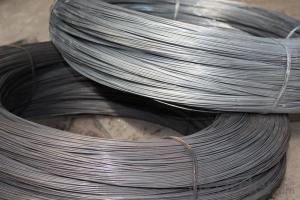SAE1006Cr Carbon Steel Wire Rod 9.5mm for Welding
- Loading Port:
- Shanghai
- Payment Terms:
- TT OR LC
- Min Order Qty:
- 100 m.t
- Supply Capability:
- 30000 m.t/month
OKorder Service Pledge
OKorder Financial Service
You Might Also Like
Item specifice
Description of SAE1006Cr Carbon Steel Wire Rod 9.5mm for Welding:
OKorder is offering Color Coated Steel Coil Prepainted Steel Coil at great prices with worldwide shipping. Our supplier is a world-class manufacturer of steel, with our products utilized the world over. OKorder annually supplies products to European, North American and Asian markets. We provide quotations within 24 hours of receiving an inquiry and guarantee competitive prices.
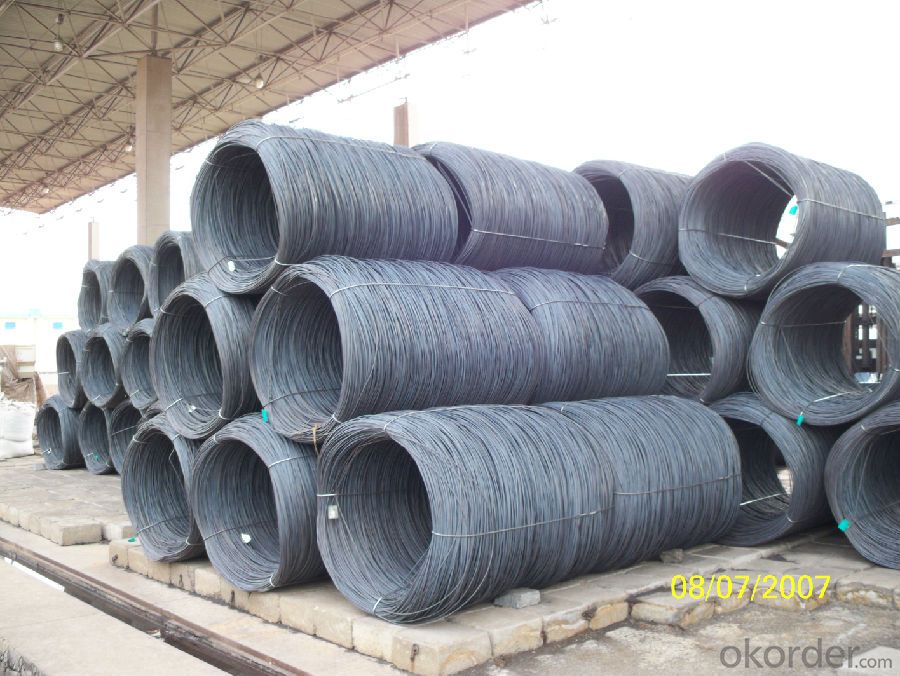
Applications of SAE1006Cr Carbon Steel Wire Rod 9.5mm for Welding:
Color Coated Steel Coil Prepainted Steel Coil are ideal for structural applications and are widely used in the construction of buildings and bridges, and the manufacturing, petrochemical, and transportation industries.
Main Product Features of SAE1006Cr Carbon Steel Wire Rod 9.5mm for Welding:
· Premium quality
· Prompt delivery & seaworthy packing (30 days after receiving deposit)
· Corrosion resistance
· Can be recycled and reused
· Mill test certification
· Professional Service
· Competitive pricing
Specifications of SAE1006Cr Carbon Steel Wire Rod 9.5mm for Welding:
PPGI:
1, Introduction: Color coated steel coils(sheets), i. E. PPGI, also called prepainted steel coils(sheets), are made of galvanized steel coils(sheets) with polymer coatings as surface. It's a new enclosure material and building board with characteristics of light-weighted, heat preserved&insulated, easily installed with bright colors.
2, Production Process: Pretreatment(Degreasing)_Drying_Chromating_Paint Basic Oil_Cooling_Drying_Color Coating_Cooling_Film-covering_Rolling Up
3, Characteristics:
Good at corrosion resistence. Besides zinc coating of the basic plate of galvanized steel sheet, the color coating as the surface has double lifetime to ensure better anticorrosion effect.
With excellent cold bending molded manufacturablity, PPGI products can be processed or directly used as final product. As being light-weighted and conveniently transported, they're widly used to replace wood to save energy.
4.There're thousands of colors can be chosen as per different application. Any color plays well in decoration.
No pollution with high recycling rate, PPGI coils and sheets are strongly recommended as enviroment-friendly products by the government.
5, eye bands and 4 circumferential bands in steel, galvanized metal fluted rings on inner and outer edges, galvanized.
| commodity | SAE1006Cr Carbon Steel Wire Rod 9.5mm for Welding |
| Techinical Standard: | JIS G3302-1998, EN10142/10137, ASTM A755 |
| grade | Q195,Q215,Q235,SAE1006,SAE1008 SAE1006Cr |
| Types: | Mesh welding |
| Base metal | galvanized, galvalume, cold rolled steel |
| Thickness | 0.14-1.0mm(0.16-0.8mm is the most advantage thickness) |
| Width | 610/724/820/914/1000/1200/1219/1220/1250mm |
| Type of coating: | PE, SMP, PVDF |
| Zinc coating | Z60-150g/m2 or AZ40-100g/m2 |
| Top painting: | 5 mic. Primer + 15 mc. R. M. P. |
| Back painting: | 5-7 mic. EP |
| Color: | According to RAL standard |
| ID coil | 508mm610mm |
| Coil weight: | 2--3MT |
| Package: | Properly packed for ocean freight exportation in 20'containers |
| Application: | Industrial panels, roofing and siding for painting/automobile |
| Price terms | FOB, CFR, CIF |
| Payment terms | 20%TT in advance+80% TT or irrevocable 80%L/C at sight |
| delivery time | 25 days after recepit of 20% TT |
| Remarks | Insurance is all risks |
| MTC 3.1 will be handed on with shipping documents | |
| We accept SGS certificatation test |
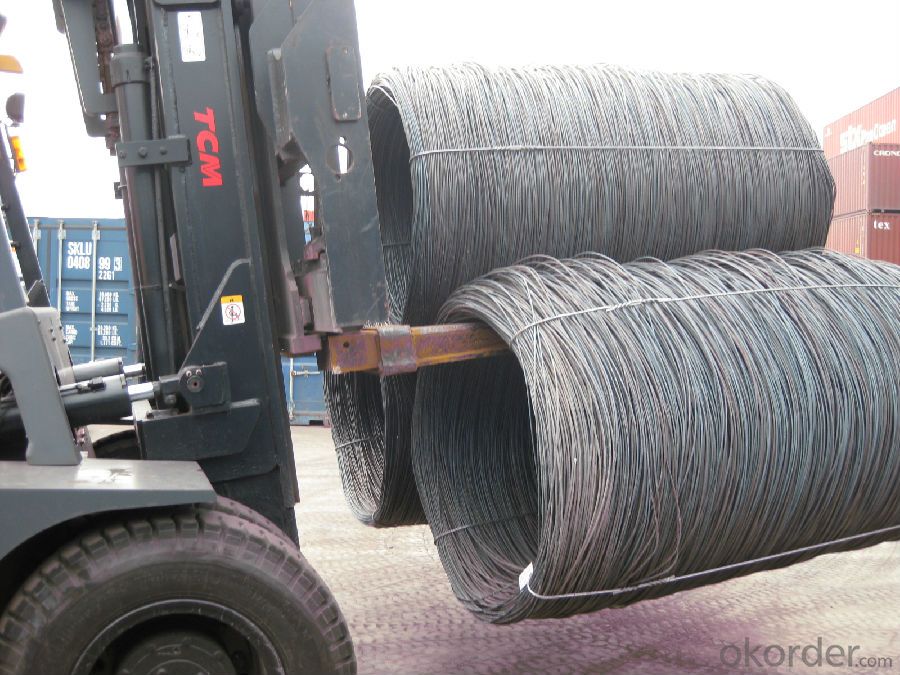
FAQ of SAE1006Cr Carbon Steel Wire Rod 9.5mm for Welding:
Q1: Why buy Materials & Equipment from OKorder.com?
A1: All products offered byOKorder.com are carefully selected from China's most reliable manufacturing enterprises. Through its ISO certifications, OKorder.com adheres to the highest standards and a commitment to supply chain safety and customer satisfaction.
Q2: How do we guarantee the quality of our products?
A2: We have established an advanced quality management system which conducts strict quality tests at every step, from raw materials to the final product. At the same time, we provide extensive follow-up service assurances as required.
Q3: How soon can we receive the product after purchase?
A3: Within three days of placing an order, we will begin production. The specific shipping date is dependent upon international and government factors, but is typically 7 to 10 workdays.
Q4: What makes stainless steel stainless?
A4: Stainless steel must contain at least 10.5 % chromium. It is this element that reacts with the oxygen in the air to form a complex chrome-oxide surface layer that is invisible but strong enough to prevent further oxygen from "staining" (rusting) the surface. Higher levels of chromium and the addition of other alloying elements such as nickel and molybdenum enhance this surface layer and improve the corrosion resistance of the stainless material.
Q5: Can stainless steel rust?
A5: Stainless does not "rust" as you think of regular steel rusting with a red oxide on the surface that flakes off. If you see red rust it is probably due to some iron particles that have contaminated the surface of the stainless steel and it is these iron particles that are rusting. Look at the source of the rusting and see if you can remove it from the surface.
- Q:What are the different surface lubricants used for steel wire rod?
- There are several different surface lubricants that are commonly used for steel wire rod. These lubricants are applied to the surface of the wire rod to reduce friction and improve the drawing process. One commonly used lubricant is a water-based emulsion. This type of lubricant contains a mixture of water and oil, along with additives to enhance its lubricating properties. Water-based emulsions are often used for drawing operations that require high-speed and high efficiency. Another type of lubricant used for steel wire rod is a dry lubricant. Dry lubricants are typically powder-based and are applied to the surface of the wire rod in dry form. These lubricants can provide excellent lubrication properties while minimizing the potential for contamination or mess. Some steel wire rod manufacturers also use oil-based lubricants. These lubricants are typically petroleum-based and can provide good lubrication properties for a wide range of drawing operations. However, oil-based lubricants may require additional cleaning steps to remove any residual oil from the wire rod surface. In addition to these commonly used lubricants, there are also specialty lubricants available for specific applications. For example, some wire rod manufacturers may use graphite-based lubricants for drawing operations that require high temperatures or extreme pressures. Overall, the choice of surface lubricant for steel wire rod will depend on factors such as the specific drawing operation, the desired level of lubrication, and any specific requirements or restrictions for the end product.
- Q:What are the different fatigue testing methods for steel wire rod?
- To evaluate the fatigue strength and performance of steel wire rods, there are several methods available. The first method is the Rotating Bending Fatigue Test. This test applies a rotating bending load to the steel wire rod, simulating real-world cyclic loading conditions. The rod is subjected to a constant load while being rotated at a specified speed. The number of cycles until failure is recorded to determine the fatigue strength of the wire rod. Next is the Axial Fatigue Test, where the steel wire rod is cyclically loaded in an axial manner. This test is commonly conducted using hydraulic or servo-hydraulic testing machines. The number of cycles until failure is recorded. This method is useful for evaluating the fatigue performance of steel wire rods used in tension applications, like suspension cables. Another method is the Torsional Fatigue Test. Here, the steel wire rod is subjected to a cyclic torsional load, simulating twisting forces experienced in certain applications. A constant torque is applied while the rod is rotated at a specified speed. The number of cycles until failure is recorded to assess the fatigue strength of the wire rod under torsional loading conditions. Lastly, the Combined Loading Fatigue Test involves subjecting the steel wire rod to a combination of different loading types, such as axial, bending, and torsional loads. This simulates the complex loading conditions encountered in real-world applications. Cyclic loading is applied in multiple directions simultaneously or sequentially. The number of cycles until failure is recorded to evaluate the fatigue performance of the wire rod under combined loading conditions. It is crucial to choose the appropriate fatigue testing method based on the specific application and loading conditions the rod will experience. The selected method should closely replicate the actual loading conditions to obtain accurate and reliable fatigue strength data for the wire rod.
- Q:What are the potential drawbacks of using steel wire rod?
- Some potential drawbacks of using steel wire rod include its susceptibility to corrosion if not properly coated, its relatively high cost compared to other materials like aluminum or plastic, and its limited flexibility and maneuverability compared to other wire materials. Additionally, steel wire rod may be heavier and bulkier, making it less suitable for certain applications that require lightweight or compact solutions.
- Q:What are the safety standards for steel wire rod used in construction?
- The overall safety and structural integrity of buildings and structures in construction are ensured by setting safety standards for steel wire rod. Various regulatory bodies and organizations, such as ASTM and ISO, establish these standards. Mechanical properties are a key aspect of the safety standards for steel wire rod. These properties, including tensile strength, yield strength, and elongation, determine the rod's ability to withstand loads and stresses. Meeting specific requirements for these properties is crucial to ensure safe performance. Quality control measures during the manufacturing process are another important safety standard. Rigorous testing and inspection procedures are applied to the steel wire rod to ensure it meets the required standards. This includes checking for surface defects, dimensional accuracy, and chemical composition. Corrosion resistance is also covered by the safety standards for steel wire rod. Construction materials are exposed to various environmental conditions, such as moisture and chemicals, which can cause corrosion. Adequate corrosion resistance is necessary for the wire rod's long-term durability and structural stability. Packaging and transportation of steel wire rod are addressed in the safety standards as well. Proper packaging is necessary to prevent damage during transit and ensure safe handling. This involves using suitable protective materials and techniques to avoid potential hazards. Construction companies and contractors must adhere to these safety standards when selecting and using steel wire rod. Compliance with these standards ensures the reliability and safety of the structures being built, protecting workers and the public. Consulting relevant local codes, regulations, and industry-specific standards is recommended when determining safety standards for steel wire rod in construction. Working with reputable suppliers and manufacturers who adhere to these standards provides assurance of the wire rod's quality and safety.
- Q:What are the national standards for steel wire rod?
- The national standards for steel wire rod vary from country to country. Each country typically has its own set of standards governing the composition, quality, and production of steel wire rod. These standards ensure that the wire rod meets the necessary requirements for strength, durability, and performance in various applications. It is important for manufacturers and consumers to adhere to these standards to ensure the safe and reliable use of steel wire rod in different industries.
- Q:How is steel wire rod used in the manufacturing of wire forms for communication cables?
- Steel wire rod plays a vital role in the manufacturing process of wire forms for communication cables. It serves as the foundational material from which wires are derived. Once obtained, the steel wire rod goes through a sequence of procedures to transform it into wire forms suitable for communication cables. To begin with, the steel wire rod is thoroughly cleansed and inspected to identify any defects or impurities. This guarantees that the resulting wire forms meet the required standards and are of the utmost quality. Once cleansed, the steel wire rod is heated to a specific temperature and passed through a set of dies. This process, referred to as drawing, reduces the diameter of the wire rod while increasing its length. Subsequent to the drawing process, the steel wire rod undergoes further processing to enhance its mechanical properties. This may involve annealing, a heat treatment method that enhances the wire's flexibility and reduces its brittleness. Additionally, the wire may undergo various surface treatments to augment its resistance to corrosion or provide insulation. Once the wire forms are manufactured, they are utilized in the production of communication cables. These wire forms can function as conductive elements within the cables, enabling the transmission of electrical signals. Moreover, the wire forms can be utilized as structural components, imparting strength and support to the cables. In the manufacturing of communication cables, the steel wire rod guarantees the production of high-quality wire forms that meet the specific requirements of these cables. The durability, flexibility, and conductivity of the wire forms contribute to the efficient and reliable transmission of information through the communication cables.
- Q:What are the main factors affecting the market share of steel wire rod?
- The main factors affecting the market share of steel wire rod include demand and consumption patterns, competition from alternative materials, price fluctuations and cost of production, technological advancements, government regulations and policies, and overall economic conditions.
- Q:What are the common industry standards for steel wire rod manufacturers?
- The common industry standards for steel wire rod manufacturers typically include specifications related to the chemical composition, mechanical properties, dimensional accuracy, surface quality, and packaging requirements of the wire rods. These standards are set by organizations such as the American Society for Testing and Materials (ASTM), International Organization for Standardization (ISO), and national or regional standards bodies. Compliance with these standards ensures the quality and consistency of steel wire rod products in the market.
- Q:How are steel wire rods used in the production of wire cables for transmitting signals?
- Steel wire rods are used in the production of wire cables for transmitting signals as they provide strength and durability to the cables. These rods are typically drawn through a series of dies to reduce their diameter and increase their length, resulting in a wire with high tensile strength and flexibility. This wire is then twisted or braided together to form the cable, which can effectively transmit signals due to the conductivity of steel.
- Q:How is a steel wire rod manufactured?
- The production of a steel wire rod in a steel mill involves several steps. To start, impurities are removed and molten iron is created by melting iron ore in a blast furnace. This molten iron is then refined in a basic oxygen furnace (BOF) or an electric arc furnace (EAF). In the BOF or EAF, the molten iron is mixed with scrap steel and other alloying elements to achieve the desired composition and quality. This mixture undergoes high temperatures and chemical reactions, which help eliminate impurities and adjust the carbon content. Once the desired composition is achieved, the molten steel is cast into billets or blooms using continuous casting. These billets or blooms solidify into a semi-finished product, which is reheated to a rolling temperature. The reheated billet or bloom is then passed through a series of rolling mills. Initially, it goes through a roughing mill that reduces its size and shape. It then proceeds to a series of intermediate and finishing mills, which gradually decrease the cross-sectional area and refine the shape further. During the rolling process, the steel undergoes high pressure, elongating it and reducing its diameter. This continuous elongation and reduction in size enhance the strength and ductility of the wire rod. After the final rolling pass, the wire rod is cooled and wound onto a spool. It then undergoes various surface treatments, such as pickling or coating, to eliminate any mill scale or oxidation and enhance the surface quality. Finally, the wire rod is tested for its mechanical properties, dimensions, and surface quality. It is either shipped as a finished product to customers or further processed into different steel wire products, such as wires for construction, automotive, or industrial applications. In summary, the production of a steel wire rod involves a combination of melting, refining, casting, rolling, and surface treatment processes to manufacture a high-quality product with the desired properties.
1. Manufacturer Overview |
|
|---|---|
| Location | |
| Year Established | |
| Annual Output Value | |
| Main Markets | |
| Company Certifications | |
2. Manufacturer Certificates |
|
|---|---|
| a) Certification Name | |
| Range | |
| Reference | |
| Validity Period | |
3. Manufacturer Capability |
|
|---|---|
| a)Trade Capacity | |
| Nearest Port | |
| Export Percentage | |
| No.of Employees in Trade Department | |
| Language Spoken: | |
| b)Factory Information | |
| Factory Size: | |
| No. of Production Lines | |
| Contract Manufacturing | |
| Product Price Range | |
Send your message to us
SAE1006Cr Carbon Steel Wire Rod 9.5mm for Welding
- Loading Port:
- Shanghai
- Payment Terms:
- TT OR LC
- Min Order Qty:
- 100 m.t
- Supply Capability:
- 30000 m.t/month
OKorder Service Pledge
OKorder Financial Service
Similar products
New products
Hot products
Related keywords
